Archetypal Character Arcs, Pt. 10: The Hero’s Shadow Archetypes
 Here in the 21st Century, we often have a confused relationship with the Hero archetype. On the one hand, he is everywhere and we love him and resonate with him. On the other hand, his sheer omnipresence has inevitably highlighted his negative counter-archetypes in almost equal force. This is because wherever we find a would-be Hero, we also find the potential for his regression into the Coward and the Bully.
Here in the 21st Century, we often have a confused relationship with the Hero archetype. On the one hand, he is everywhere and we love him and resonate with him. On the other hand, his sheer omnipresence has inevitably highlighted his negative counter-archetypes in almost equal force. This is because wherever we find a would-be Hero, we also find the potential for his regression into the Coward and the Bully.
This is not because the Hero is any more flawed than any of the other primary archetypal character arcs. As we’ve seen, every positive archetype is partnered with a polarity of passive/aggressive shadow archetypes. But the Hero’s negative archetypes are particularly interesting (and cautionary) simply because of the profound and implicit pervasiveness of the Hero’s Journey in the literature and film of the last century. We are perhaps more apt to recognize the problems inherent within the Hero Arc simply because those problems are often the very ones that stymie us personally and culturally.
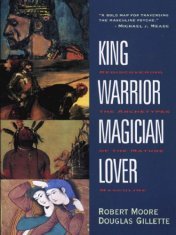
King, Warrior, Magician, Lover by Robert Moore and Douglas Gillette (affiliate link)
In their classic examination of masculine archetypes, King, Warrior, Magician, Lover, Robert Moore and Douglas Gillette point out the inherent, if comparative, immaturity found within the Hero Arc:
There is much confusion about the archetype of the Hero. It is generally assumed that the heroic approach to life, or to a task, is the noblest, but this is only partly true. The Hero is, in fact, only an advanced form of Boy psychology—the most advanced form, the peak, actually, of the masculine energies of the boy, the archetype that characterizes the best in the adolescent stage of development. Yet it is immature, and when it is carried over into adulthood as the governing archetype, it blocks men from full maturity.
As we’ve already explored in the post on the Hero Arc, this archetype is only the second in a cycle of six. It is the final journey of the “youthful” stage of life, which may be thought of as life’s First Act. The arc itself is fundamentally about growing up in the fullest sense—not just individuating (which should be accomplished within the preceding Maiden Arc), but responsibly reintegrating into society as a full-fledged adult.
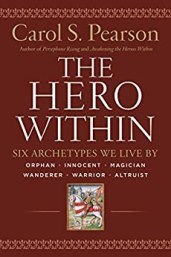
The Hero Within by Carol S. Pearson (affiliate link)
It is an arc that comes for us all at some point—but one that, despite its prevalence, is misunderstood by modern society simply because we do not understand what comes next (i.e., the mature “adult” arcs of Queen and King). As Carol S. Pearson notes in The Hero Within, this is important beyond just character arcs and literature:
When the heroic journey was thought to be for special people only, the rest of us just found a secure niche and stayed there. Now we have no secure places in which to hide and be safe. In the contemporary world, if we do not choose to step out on our quest, it will come to get us. We are being thrust on the journey. That is why we all must learn its requirements.
If, however, the Hero fails to complete his transformation into the mature arcs of life’s Second Act, he is very likely to instead transition sideways into his negative shadow archetypes—the Coward and the Bully. The Coward represents the passive polarity within the Hero’s shadow, the Bully the aggressive polarity.
Once again with our series-wide reminder: The arcs and their related archetypes are alternately characterized as feminine and masculine. This is primarily indicating the ebb and flow between integration and individuation, among other qualities. Together all six primary life arcs create a progression that can be found in any human life (provided we complete our early arcs in order to reach the later arcs with a proper foundation). In short, although I use feminine pronouns in relation to the feminine arcs and masculine pronouns in relation to the masculine arcs, archetypal representations within these journeys can be of any gender.
The Coward: A Passive Refusal to Take ResponsibilityAs with all of the passive counter-archetypes, we find the presence of the Coward implicit within the beginning of the Hero Arc. However much the Hero may long for adventure in “the great wide somewhere,” he is not about to unequivocally volunteer. In the very beginning of his journey, he will display his immaturity in his laziness, complacency, or even outright cowardice.
Like Luke Skywalker at the beginning of his journey, he may whine and gripe a bit about his meaningless life in the middle of nowhere, but he won’t summon the courage to leave it until the Call to Adventure arrives (and even then he starts out at least symbolically refusing it).

There are good reasons for this. However much humans may need to grow and mature, our entire concept of survival is built around maintaining a status quo. This is why the Inciting Event and First Plot Point in a story, which force the Hero out of his Normal World, are inevitably “bolts from the blue”—signifying the arrival of conflict from outside the Hero’s safe world. Pearson says:
…although some people take off on the quest with a high sense of adventure, many experience it as thrust upon them by their feeling of alienation or claustrophobia, by the death of a loved one, or by abandonment or betrayal.

The Hero With a Thousand Faces Joseph Campbell (affiliate link)
This is normal—indeed, archetypal. Part of the Hero Arc lies within the Hero’s own inner struggle against the Coward. But the Coward begins to prevail if the Hero’s initial Refusal of the Call is not quickly overcome. In The Hero With a Thousand Faces, Joseph Campbell notes, rather dourly:
Often in actual life, and not infrequently in the myths and popular tales, we encounter the dull case of the call [to adventure] unanswered; for it is always possible to turn the ear to other interests. Walled in by boredom, hard work, or “culture,” the subject loses the power of significant affirmative action and becomes a victim to be saved…. The myths and folk tales of the whole world make clear that the refusal is essentially a refusal to give up what one takes to be one’s own interest. The future is regarded not in terms of an unremitting series of deaths and births, but as though one’s present system of ideals, virtues, goals, and advantages were to be fixed and made secure.
Like the Damsel before him, the Coward often hides behind a guise of seeming wisdom and maturity. Why take risks? Why not let others endanger themselves for the good of all? After all, somebody has to stay behind and take care of things. But this is false maturity. Once the Call arrives (whatever its form—mythic or modern), it is not the Hero’s role to hold the fort. That task belongs to others—the Queen and the King. If he chooses to ignore this, he is doing it for selfish reasons and not for the good of his community—and, ironically, as Pearson points out, he will eventually suffer for it just as much as if he had risked all:
The Coward’s Potential Arcs: Positive and NegativeMany people subscribe to the false idea that being heroic means you have to suffer and struggle to prevail. The fact is, most of us will experience difficulty whether or not we claim the heroic potential within us. Moreover, if we avoid our journeys, we also may feel bored and empty.
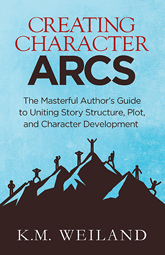
Creating Character Arcs (Amazon affiliate link)
As noted, the Coward is already a kernel waiting to sprout within the Hero Arc. In many ways the beliefs of the Coward comprise the Lie the Hero Believes—and which the Hero will overcome within a Positive-Change Arc.
It should be noted his cowardice may also be projected outward and represented by supporting characters. Allowing supporting characters to “act out” parts of the protagonist’s inner self is also a deeply powerful thematic presentation. We can see this in such stories as Harry Potter, in which Harry’s lovable best friend Ron Weasley usually represents the Coward—even though he inevitably redeems himself at the end of every installment within the series.

In Star Wars, the Coward can be seen to be represented by Threepio, who is always the “voice of caution.” Often, but not always, this iteration of the Coward aligns with what, in the Dramatica system, is termed the Reason character.
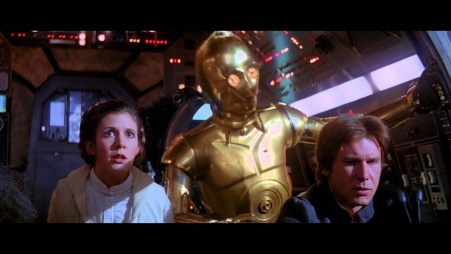
If the Coward does not summon enough courage to embrace his journey (whether at the very beginning of the story or later after he has been thrust upon it against his will), he will fall prey to one of two possible fates.
He might cling ever tighter to his fear and immaturity, which will cause him to stultify his growth. Even if life’s chronology pushes him ahead into later forms of adulthood and elderhood, he will remain frozen in the passive archetypes—Snow Queen, Puppet, Hermit, and Miser.
The second possibility is that he will pluck up his resolve enough to face his challenges head-on. In so doing, he will discover that he does, in fact, possess more personal power than he realized. But, again, his forward progression stalls. Instead of using this power to arc into the love and social responsibility of a full-blown Hero, he will instead use this power selfishly (and ultimately still from a place of fear) by turning into the Bully.
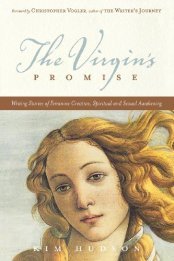
The Virgin’s Promise by Kim Hudson (affiliate link)
In The Virgin’s Promise, Kim Hudson talks about the underlying truths that join both of the potentially negative archetypal polarities of the Hero:
The Bully: An Aggressive Refusal to Take ResponsibilityThe choice of Coward emphasizes the unspoken quality of courage in the term Hero, and points out a deep and consistent truth about Villains and Shadow figures—they are cowards, choosing a selfish and greedy path rather than the heroic path of self-sacrifice for the greater good.
At first glance, the Bully can seem powerful—more powerful even than the true Hero. But like all aggressive polarities within the shadow archetypes, his power contains an inherent weakness. It is “stuck”—brittle—instead of free-flowing and transformative like the Hero’s.
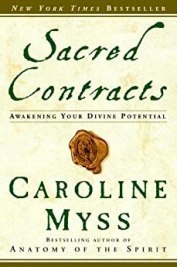
Sacred Contracts by Caroline Myss (affiliate link)
In many ways, the Bully is the true shadow form of the Hero, as called out by Caroline Myss in Sacred Contracts:
From a shadow perspective, the Hero can become empowered through the disempowerment of others.
Unlike the Coward, the Bully may well have at least gotten a “passing grade” on individuating from his authority figures, in the previous arc. But he has not only stalled out in re-integrating into society in a healthy and responsible way, he has in fact blocked himself (and/or been obstructed by equally regressive social influences) from doing so. If the Hero is about arcing into Love, the Bully is ultimately an archetype stuck in hatred. Deep down, he has embraced a societal wound in a way that not only prevents his healing and growth, but also causes him to fear and resent the idea of reintegrating into a larger community.
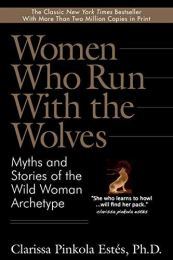
Women Who Run With the Wolves by Clarissa Pinkola Estes (affiliate link)
And so, even if he surrounds himself with “minions,” he stands apart from the cycle of life. Like all aggressive archetypes, he avoids the painful challenges of true growth and instead tries to control reality. As so often happens in cycles of abuse, he becomes the very thing he himself fears and hates. In Women Who Run With the Wolves, Clarissa Pinkola Estés speaks a familiar truth:
The Bully’s Potential Arcs: Positive and NegativeMost often we wound others where, or very close to where, we have been wounded ourselves.
But there is always hope. As with all of the shadow archetypes, the Bully is not inevitably lost. Indeed, his retained flicker of inherent personal power—and his refusal to completely surrender it—signals the potential for positive transformation, as Myss (who is always quick to examine the “positive” side of the negative archetypes and vice versa) points out:
The archetype of the Bully manifests the core truth that the spirit is always stronger than the body.
Indeed, any ultimately positive Hero Arc may start out emphasizing the Bully side of the character’s polarity. Although this can present challenges for the author (and the readers), since the Bully is often unlikable as a character, it does offer the opportunity for a deep arc, along the lines of what Moore and Gillette eulogize:
The “death” of the Hero is the “death” of boyhood, of Boy psychology. And it is the birth of manhood and Man psychology. The “death” of the Hero in the life of a boy (or a man) really means that he has finally encountered his limitations. He has met the enemy, and the enemy is himself. He has met his own dark side, his very unheroic side. He has fought the dragon and been burned by it; he has fought the revolution and drunk the dregs of his own inhumanity. He has overcome the Mother and then realized his incapacity to love the Princess. The “death” of the Hero signifies a boy’s or man’s encounter with true humility. It is the end of his heroic consciousness.
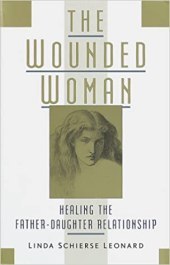
The Wounded Woman by Linda Schierse Leonard (affiliate link)
But, of course, the fight for his better self may not end triumphantly, and the Bully may instead arc more deeply into aggression by rejecting the assimilation of “Love” found at the end of a true Hero Arc. In The Wounded Woman, Linda Schierse Leonard speaks of the Bully archetype in terms of a woman’s psyche and inner destructive animus, but her words hold equally true for anyone:
It is then that the masculine becomes brute-like and sacrifices not only the outer woman but also its inner feminine side.
If the Bully is deeply wounded and defeated in the outer conflict, it is also possible he may lose his willpower and resolve, instead reverting to the passive Coward. Indeed, because the Coward’s fear (of life, love, and power) lie at the heart of the Bully, the Coward is always with him. But only if his aggressive actions in the exterior conflict prove personally destructive will he abandon them.
Key Points of the Hero’s Shadow ArchetypesFor easy reference and comparison, I will be sharing some scannable summations of each arc’s key points:
Passive Shadow Archetype: Coward is Ineffectual (to protect from consequences of Courage)
Aggressive Shadow Archetype: Bully is Destructive (aggressive use of Courage)
Positive Hero Arc: Individual to Protector
Hero’s Story: A Quest.
Hero’s Symbolic Setting: Village
Hero’s Lie vs. Truth: Complacency and/or Recklessness vs. Courage
“My actions are insignificant in the overall scope of the world.” versus “All my actions affect those I love.”
Hero’s Initial Motto: “I, the powerful.”
Hero’s Archetypal Antagonist: Dragon
Hero ’ s Relationship to Own Negative Shadow Archetypes:
Either Coward finally uses his Strength because he learns to Love and wants to defend what he loves.
Or Bully learns to submit his Strength to the service of Love.
Examples of the Coward and Bully ArchetypesExamples of the Coward and Bully archetypes include the following. Click on the links for available structural analyses.
Coward
Ron Weasley in Harry Potter The Narrator in Fight Club Cowardly Lion in The Wizard of OzThreepio in Star Wars Paris in Troy Edmund Sparkler in Little Dorrit Richard Carstone in Bleak HouseLambert in AlienBully
Thor Odinson in Thor John Bender in The Breakfast ClubEdmund Pevensie in The Lion, the Witch, and the Wardrobe Draco Malfoy in Harry Potter Tyler Durden in Fight Club Regina George in Mean GirlsBill Sikes in Oliver TwistFannie in Little Dorrit Herbert Sobel in Band of BrothersGaston in Beauty & the BeastSid Phillips in Toy Story Emily in The Devil Wears PradaMary Crawley in Downton AbbeyStay Tuned: Next week, we will study the shadow archetypes of the Queen: the Snow Queen and the Sorceress.
Related Posts:
Story Theory and the Quest for MeaningAn Introduction to Archetypal StoriesArchetypal Character Arcs: A New SeriesThe Maiden ArcThe Hero ArcThe Queen ArcThe King ArcThe Crone ArcThe Mage ArcIntroduction to the 12 Negative ArchetypesThe Maiden’s Shadow ArchetypesWordplayers, tell me your opinions! Can you think of any further examples of stories that feature either the Coward or the Bully? Tell me in the comments!Click the “Play” button to Listen to Audio Version (or subscribe to the Helping Writers Become Authors podcast in Apple Podcast or Amazon Music).
___
Love Helping Writers Become Authors? You can now become a patron. (Huge thanks to those of you who are already part of my Patreon family!)The post Archetypal Character Arcs, Pt. 10: The Hero’s Shadow Archetypes appeared first on Helping Writers Become Authors.




